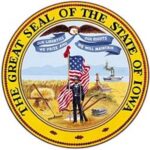John Keats was born in London, England, on October 31, 1795 (although, the true date is unknown, because Keats never admitted the real day of his birthday), the first child out of five, to Frances Jennings Keats and Thomas Keats. In 1804 while Keats was ten, John’s father died in an accident at work, and Frances soon remarried a bank clerk less than two months later. So, by law, the property that once belonged to Thomas Keats, was now under the ownership of the new husband, and, he quickly sold the Keats estate, then disappeared as fast as he arrived. Completely torn by the sudden events, John began acting out, getting into brawls with other boys, and winning each time; even though he was rather small at the age (never growing more than a few inches over five feet). (Link)
Francis gave her five kids to their grandmother who lived in Edmonton, Middlesex, then she herself, disappeared, rumoring to have become a prostitute to support her rambling lifestyle. John attended a school named Enfield, he was seen as a quarrelsomely vigorous individual, and not at all a person of a literary stature. In 1809, John’s mother returned, ill from a severe case of tuberculosis, and John tended to her until her death later the next year. Their grandmother soon sent the five children to live with a legal guardian by the name of Richard Abbey, whom provided John with the encouragement to pursue a career in the medical field. In 1811, he excelled as an apprentice to a surgeon named Sir Edmund Hammond, at Guy’s Hospital; all the while, John was beginning to become increasingly captivated by an obsession for poetry and writing. He earned his credentials in 1816, yet, at that point, his true love for poetry had already overshadowed the profession he once seeked so feverishly; he left behind the career of being a surgeon and continued on to become a poet. (Link)
John Keats published his first book of poetry in March of 1817, but it didn’t sell as many copies as he’d hoped, and afterward fell into a period of melancholy; but still treading along his path of writing and building his own unique style. His friend, Percy Shelley, challenged him to a poetry competition during the summer; and that is when John wrote his epic “Endymion” (Keats didn’t complete his poem on time, therefore Percy won the competition), which he published and left to a hike near Scotland. He returned home with signs of an approaching sickness; and also to discover his poem was badly criticized. (Link)
John Keats fell ill with tuberculosis in 1819, and the growing illness harshened in February of 1819. The rest of his life was plagued with sickly days and wearisome ailments, on most occasions coughing up dark blood. Most of John’s poems and odes were not highly regarded until after his agonizing death in 1821; then only did he become a figure which represented the era of Romantic Poets. A single line from “Lamia” helps establish the true genius whom once wrote countless enigmatic stories of naiads, goddesses, and fairies.
“And full of silver moons, that, as she breath’d, dissolv’d, or brighter shone, or interwreathered their lustres with the gloomier tapestries…”
Hidden amongst his words, are the endless assumptions, and the aimless amounts of portrayals which can be fathomed; Keats was eternally obsessed with the idea of the normal conscious becoming absorbed by realms beyond the human existence. Now, all that remains of this incredible poet, are his worlds he created with words.


